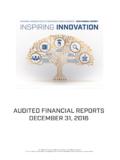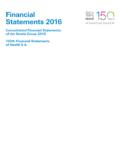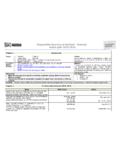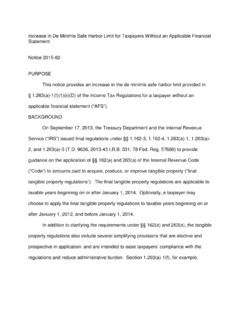Transcription of 2015 OECD/INFE TOOLKIT FOR MEASURING …
1 2015 OECD/INFE TOOLKIT . FOR MEASURING . financial literacy AND. financial inclusion . March 2015 . This document contains the 2015 OECD/INFE TOOLKIT for MEASURING financial literacy and financial inclusion . This is an updated version of the TOOLKIT welcomed by G20 leaders in September 2013. The TOOLKIT is made available to public authorities and other organisations in preparation for the 2015 OECD/INFE financial literacy and financial inclusion measurement exercise. Public authorities and other organisations can also use the OECD/INFE questionnaire contained in this document outside of the timeline proposed and undertake their own analyses. A guide to creating financial literacy scores for this purpose can be provided by the Secretariat on request. For any queries, please contact the OECD/INFE Secretariat Organisation for Economic Co-operation and Development, 2 rue Andr -Pascal, 75775 Paris cedex 16, France This document and any map included herein are without prejudice to the status of or sovereignty over any territory, to the delimitation of international frontiers and boundaries and to the name of any territory, city or area.
2 OECD 2015 . TABLE OF CONTENTS. WHAT THE TOOLKIT OFFERS ..4. Using the TOOLKIT to collect internationally comparable data ..5. Participating in the 2015 METHODOLOGY ..9. Commissioning the fieldwork ..9. Achieving a robust sample ..10. Preparing the questionnaire for fieldwork ..10. Field work and data collection ..11. Data handling and preparation for Data analysis and reporting ..12. UPDATED OECD/INFE CORE QUESTIONNAIRE ..13. OPTIONAL QUESTIONS FOR ASSESSING COMMUNICATION CAMPAIGNS ..37. ANNEX 1 QUESTIONS IN THE 2015 QUESTIONNAIRE ..39. ANNEX 2 INTERVIEWER BRIEFINGS ..42. ANNEX 3 ONLINE SURVEYS ..46. ANNEX 4 CHECKLIST FOR SUBMITTING DATA ..47. 3. WHAT THE TOOLKIT OFFERS. This document contains the OECD/INFE TOOLKIT for MEASURING financial literacy and financial inclusion , welcomed by G20 leaders in September 2013.
3 The TOOLKIT was piloted in 2010 during the first OECD. international financial literacy and financial inclusion measurement exercise. Between 2011 and 2014 it was used in over 30 additional countries. The document has been updated in preparation for a second international measurement exercise [proposed timeline on p6]. This exercise will provide volunteering countries with: - The opportunity to gather robust data on the financial knowledge, attitudes, behaviour and wellbeing of the adult population. - International, comparative analysis and reporting undertaken by the OECD/INFE Secretariat at no cost to participating countries. - Information by different target groups to inform financial education and financial inclusion initiatives. - The possibility of benchmarking your country against others internationally or at a regional level.
4 - The important signal that your country is following international good practices and actively participating in the international financial literacy agenda. Please inform the OECD/INFE Secretariat of your interest in participating in the 2015 OECD/INFE financial literacy and financial inclusion measurement exercise, noting the dates of the proposed timeline on p6. Organisations can also use the OECD/INFE questionnaire contained in this document outside of the timeline proposed and undertake their own analyses. A guide to creating financial literacy scores for this purpose can be provided on request. The content The OECD/INFE financial literacy and financial inclusion measurement TOOLKIT incorporates: Methodological guidance. A core questionnaire designed to capture information about financial behaviour, attitudes and knowledge, in order to assess levels of financial literacy and financial inclusion .
5 Optional questions designed to provide more depth on topics such as financial goal setting and experiencing financial scams, which are positioned within the core questionnaire for ease of use. A small set of additional optional questions that may be used to assess communication campaigns, where relevant. Detailed Annexes, covering interviewer briefing and online surveys. A checklist for submitting data. 4. 1. This TOOLKIT is based on recommendations developed in an OECD working paper (Kempson 2009) , a formal 2. pilot undertaken in 2010 , and feedback from several meetings, workshops and conferences. The questions themselves are largely drawn from existing surveys, and represent good practice in financial literacy and financial inclusion measurement. The financial literacy component of the core questionnaire reflects the OECD/INFE definition of financial literacy as: A combination of awareness, knowledge, skill, attitude and behaviour necessary to make sound financial decisions and ultimately achieve individual financial wellbeing.
6 '. The questionnaire is designed to collect internationally comparable information. It includes questions to capture: The behaviour, attitudes and knowledge of the adult population;. Information about a wide range of financial literacy topics related to keeping track of finances, making- ends-meet, longer-term financial planning (including retirement saving) and choosing products;. Information on product awareness and holding in order to inform work on financial inclusion ;. Levels of financial wellbeing; and Socio-demographic information. Using the TOOLKIT to collect internationally comparable data The TOOLKIT was developed in 2009 and used in the first international measurement exercise in 2010 across 14. Countries: Albania, Armenia, British Virgin Islands, the Czech Republic, Estonia, Germany, Hungary, Ireland, 3.
7 Malaysia, Norway, Peru, Poland, South Africa and the UK . More than 30 countries have since used it to collect data on financial literacy to inform financial education policies or strategies, and several have done so more than once. Furthermore, in September 2013, G20 leaders welcomed the TOOLKIT and supported its widespread use. The first TOOLKIT has been slightly updated whilst maintaining the core questions used to develop financial literacy scores and measures of financial inclusion . This updated version will be used to undertake the second international, co-ordinated measurement exercise in 2015 . The second co-ordinated measurement exercise brings several benefits. In particular it: Gives all countries the opportunity to participate in an international comparison and benefit from inclusion in the cross-country, comparative analysis undertaken by the OECD Secretariat.
8 Allows countries that have used the core questionnaire previously to track changes across their population and see how these compare with changes in other countries. 1. Kempson, E. (2009), Framework for the Development of financial literacy Baseline Surveys: A First International Comparative Analysis , OECD Working Papers on Finance, Insurance and Private Pensions, No. 1, OECD Publishing. doi: 2. Atkinson, A. and F. Messy (2012), " MEASURING financial literacy : Results of the OECD / International Network on financial Education (INFE) Pilot Study", OECD Working Papers on Finance, Insurance and Private Pensions, No. 15, OECD Publishing. DOI: 3. Atkinson, A. and Messy, F-A. (2012), MEASURING financial literacy : Results of the OECD INFE Pilot Study , OECD Working Papers on Finance, Insurance and Private Pensions, No.
9 15, OECD Publishing. 5. Provides the opportunity for countries developing or implementing a National Strategy for financial Education (55 in 2014) to collect reliable baseline data and benchmark their progress against other countries in similar circumstances. Provides an important signal that participating countries are following international good practice and actively participating in the international financial literacy agenda. Each of the questions has been chosen to provide valuable information about a specific aspect of financial literacy or financial inclusion . The responses to various core questions can also be combined to produce financial 4. literacy scores and a financial inclusion score using the methodology devised by the OECD/INFE . Use of the core questions can be complemented by the optional questions within this TOOLKIT and drawing on the OECD/INFE set of 5.
10 Supplementary questions (available separately) to add further detail to national surveys . Participating in the 2015 exercise Authorities wishing to participate in this exercise should, in principle, be prepared to submit their completed datasets (one per country) by September 2015 (see Timeline below and Annex 4 for a checklist of supporting information to send with the dataset). Where this is not possible, authorities may request a later date for submission, up until the 27 February 2016. Timeline for countries wishing to be included in the international comparison Data collection at national level April September 2015 . Clean, labelled dataset provided to OECD/INFE Secretariat for analysis, September 2015 . submitted with the information requested in the checklist in Annex 4.
















